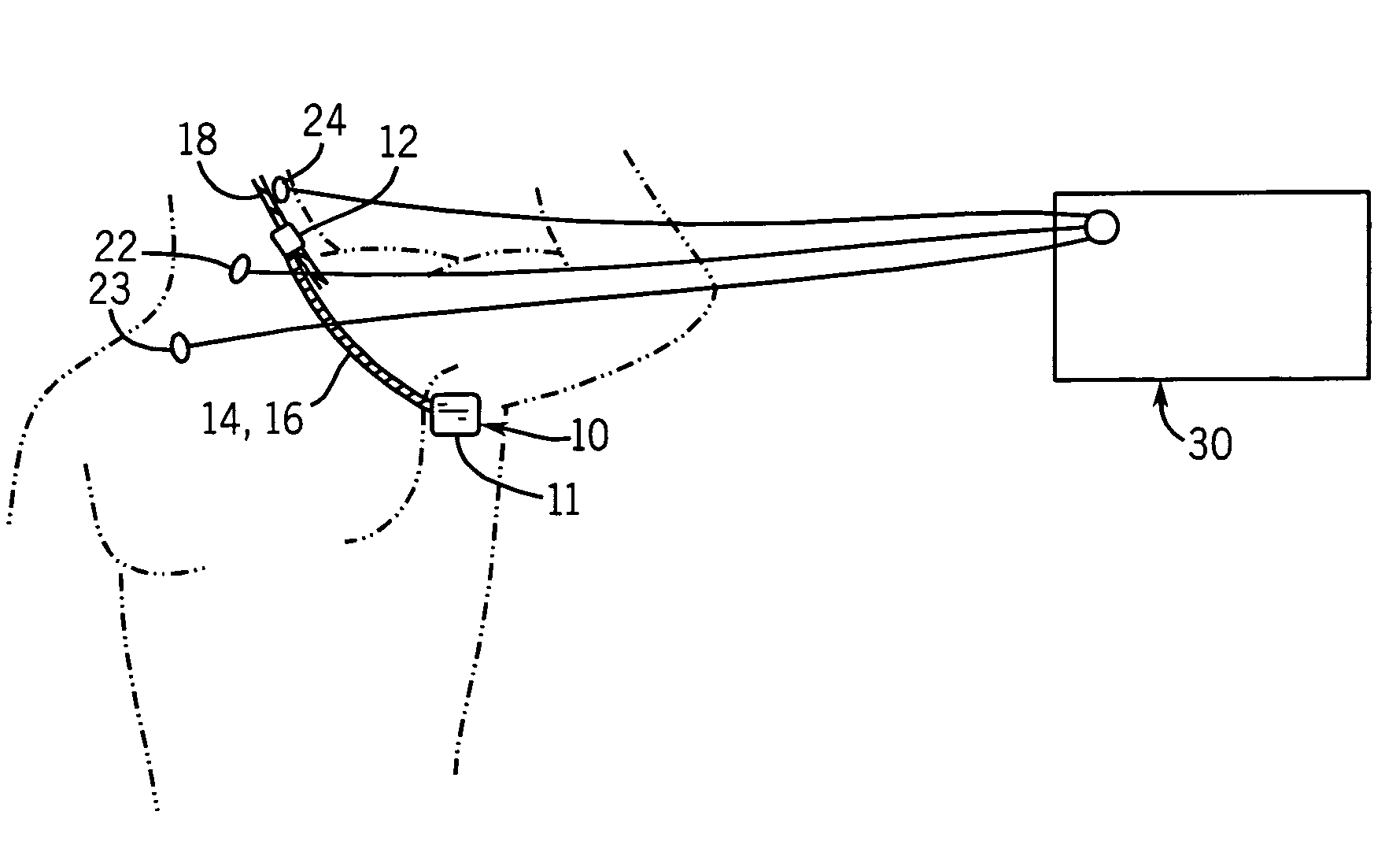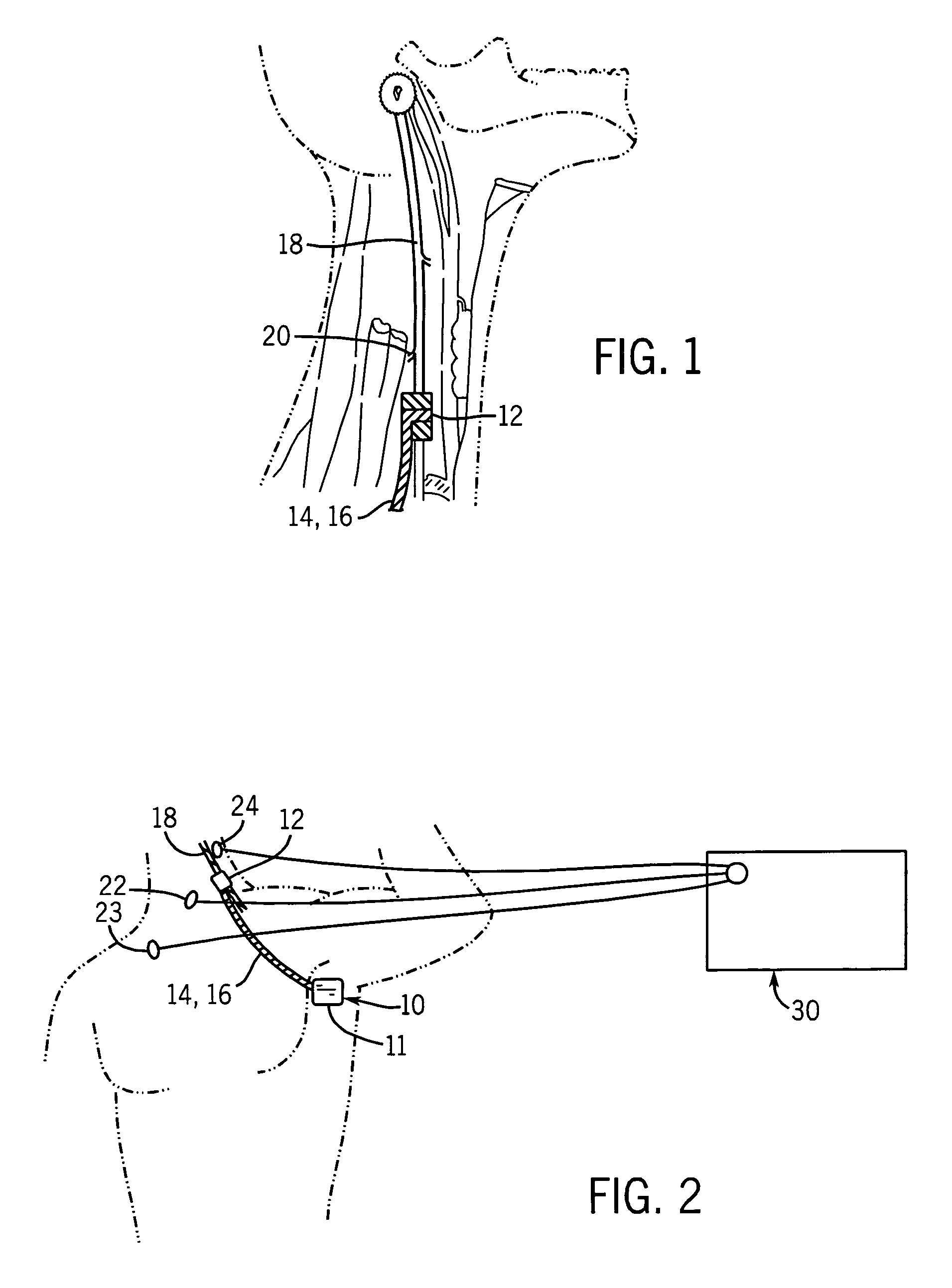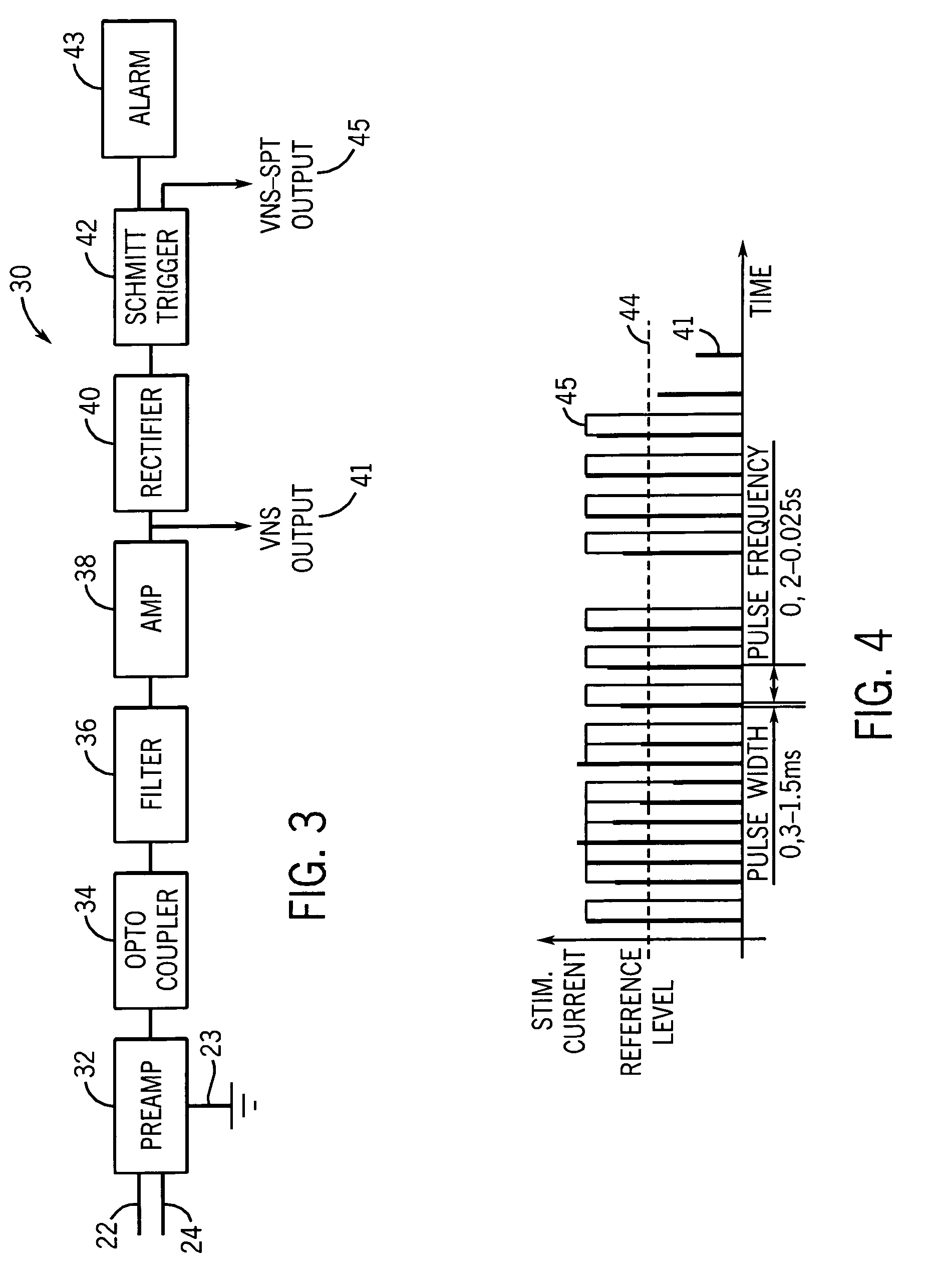Method and apparatus for detecting vagus nerve stimulation
a vagus nerve and stimulation technology, applied in the field of vagus nerve stimulation methods and apparatuses, can solve the problems of inability to monitor data in conjunction with other physiological signals, difficult for care providers to correlate the stimulation of the vagus nerve, and certain difficulties, so as to eliminate extraneous noise
- Summary
- Abstract
- Description
- Claims
- Application Information
AI Technical Summary
Benefits of technology
Problems solved by technology
Method used
Image
Examples
Embodiment Construction
[0019]Referring now to the figures, and more particularly to FIGS. 1 and 2, a patient with an embedded Vagus Nerve Simulator (VNS) 10 is shown. The VNS 10 includes an electrode patch 12 having both a positive and a negative electrode, and a pair of leads 14 and 16 which lead to a pulse generator 11. The electrode patch 12 is coupled to the vagus nerve 18 at a position below the inferior cardiac nerve 20. Operation of the VNS 10 to stimulate the vagus nerve 18 is described more fully in U.S. Pat. No. 4,702,254, which is hereby incorporated by reference for its description of vagus nerve stimulator devices.
[0020]Referring still to FIGS. 1 and 2, to monitor the application of the VNS 10, electrodes 22 and 24 which provide a differential probe are placed on the lateral side of the neck of the patient and on the upper thorax, respectively and are aligned such that they are positioned directly adjacent the electrode patch 12 which connects the vagus nerve 18 to the pulse generator 11. An ...
PUM
 Login to View More
Login to View More Abstract
Description
Claims
Application Information
 Login to View More
Login to View More - R&D
- Intellectual Property
- Life Sciences
- Materials
- Tech Scout
- Unparalleled Data Quality
- Higher Quality Content
- 60% Fewer Hallucinations
Browse by: Latest US Patents, China's latest patents, Technical Efficacy Thesaurus, Application Domain, Technology Topic, Popular Technical Reports.
© 2025 PatSnap. All rights reserved.Legal|Privacy policy|Modern Slavery Act Transparency Statement|Sitemap|About US| Contact US: help@patsnap.com



